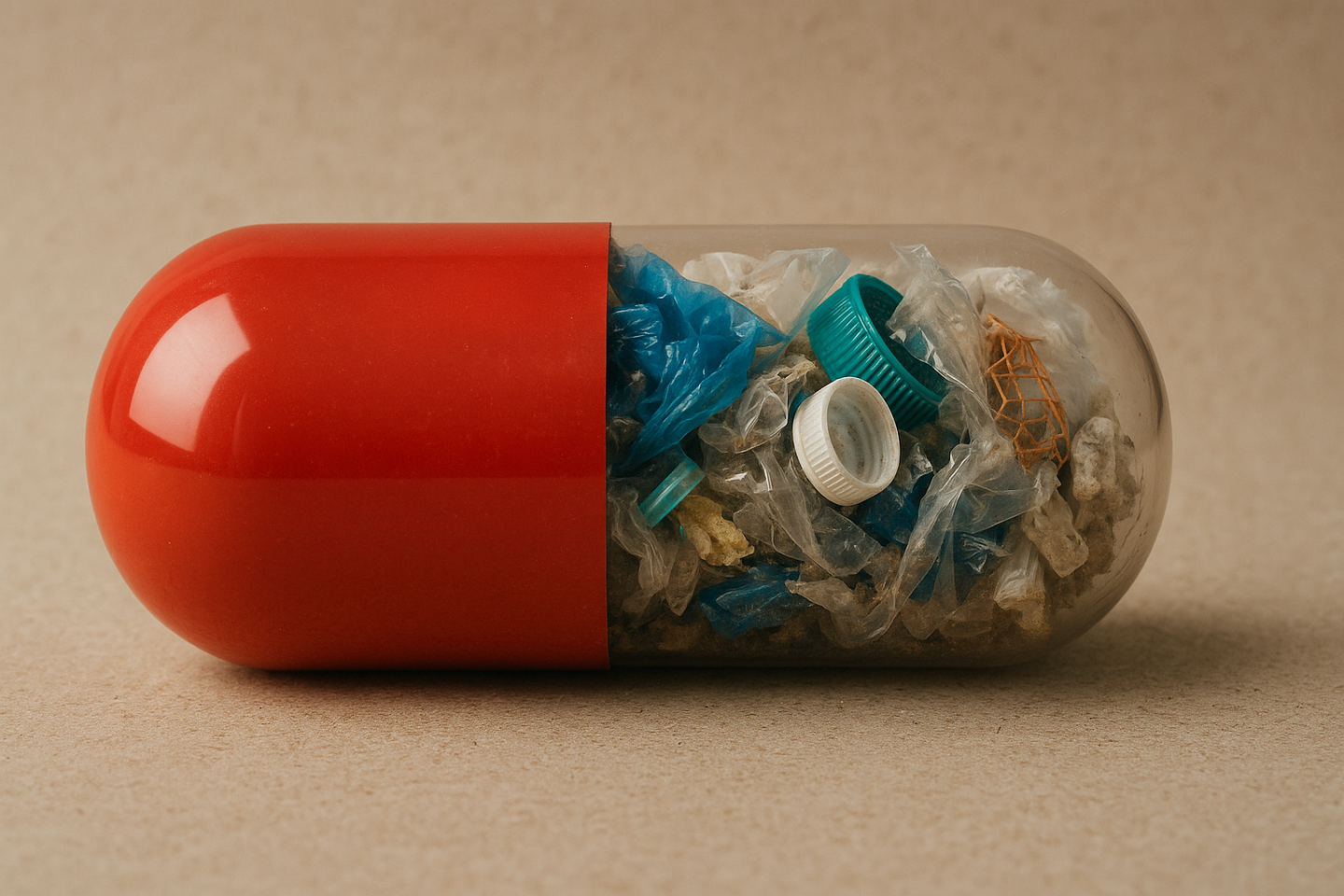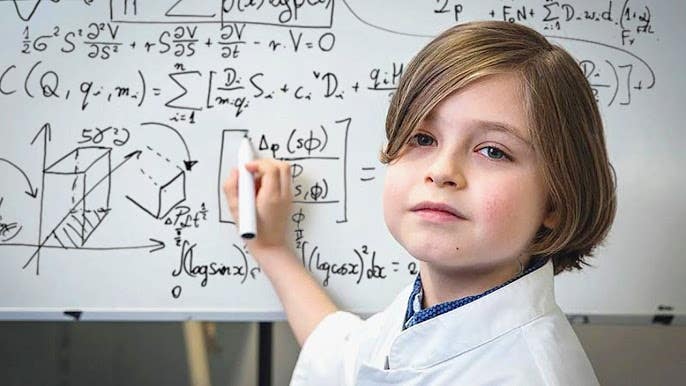Breakthrough discovery transforms plastic waste into common painkiller
Researchers turn plastic waste into paracetamol using engineered bacteria, offering a cleaner, sustainable path for drug production.

A research team has found a way to turn plastic waste into paracetamol using engineered microbes, offering a greener drug production method. (CREDIT: AI-generated / The Brighter Side of News)
Each year, over 350 million tons of plastic are produced, much of it ending up in landfills or the ocean. A major contributor is polyethylene terephthalate (PET), used in everything from soda bottles to food packaging. Most PET isn’t recycled and continues to pollute the environment long after its use. But a research team from the University of Edinburgh has taken a different approach to this growing crisis—by transforming PET into medicine.
Key Takeaways
- Genetically modified E. coli can turn PET plastic into paracetamol through a process using biocompatible chemistry.
- The method produces over 90% conversion efficiency and emits almost no greenhouse gases.
- This breakthrough offers a sustainable path to drug production while reducing reliance on fossil fuels and addressing plastic waste.
In a breakthrough published in Nature Chemistry, scientists led by Professor Stephen Wallace discovered how genetically engineered bacteria can convert degraded PET into paracetamol, also known as acetaminophen—the active ingredient in widely used painkillers like Tylenol and Panadol. The technique offers not only a new method to repurpose plastic waste, but also a greener way to manufacture drugs that are currently made using fossil fuels.
At present, most paracetamol is derived from benzene, a petrochemical obtained from crude oil. Industrial processes that refine benzene generate significant greenhouse gas emissions, adding to the global carbon burden. Wallace called paracetamol "a really good example" of how modern medicine remains linked to unsustainable resources.
Engineering Bacteria to Brew Medicine
The team’s method starts by degrading PET plastic into terephthalic acid. This molecule is then added to a culture of modified Escherichia coli bacteria. What happens next had never been observed before in a biological system. Inside bacterial cells, a chemical shift called the Lossen rearrangement transforms terephthalic acid into para-aminobenzoic acid (PABA). PABA is a key intermediate in the process of making paracetamol.
Previously, the Lossen rearrangement had only been seen in test tubes. But Wallace's team showed that this classic chemical reaction could occur inside living cells, aided by naturally occurring phosphate ions. From there, the team engineered E. coli with genes from soil bacteria and mushrooms. This let the cells turn PABA into paracetamol using enzyme-driven steps.
This approach helped the bacteria make paracetamol quickly—converting over 92% of PET input in under 24 hours. And unlike traditional manufacturing, this microbial method operated at room temperature and produced virtually zero emissions.
Related Stories
- Majestic '8th continent' collects and recycles plastic from the ocean
- Teabags release billions of microplastic particles into a single cup
- Revolutionary process vaporizes plastic bags and bottles to create new, recycled plastics
“This work demonstrates that PET plastic isn’t just waste or a material destined to become more plastic—it can be transformed by microorganisms into valuable new products,” said Wallace, who is also a UKRI Future Leaders Fellow and Chair of Chemical Biotechnology.
A Sustainable Leap Forward
The research team likens their process to brewing beer. Just as yeast turns sugars into alcohol, their engineered bacteria ferment plastic molecules into painkillers. The fermentation setup doesn’t need high heat or energy. This makes the process far more sustainable than traditional paracetamol production.
Pharmaceutical companies have taken note. AstraZeneca helped fund the study and is collaborating with Wallace’s team to explore scaling the process for commercial use. The new method isn't ready for mass production yet, but it could help reduce fossil fuel use and carbon emissions.
Currently, thousands of tons of fossil fuels are used annually to power drug manufacturing plants. These factories emit greenhouse gases and depend on a shrinking supply of raw materials. Wallace’s approach turns that model upside down, showing how plastic waste—a major environmental hazard—can become a valuable feedstock instead.
“It’s going to be a while until you can go to the bar and get your beer in a plastic cup, take it home, put a bacterium in it and turn it into your hangover cure the next day,” Wallace said. “But we’re getting there.”
The Science Behind the Breakthrough
Central to this innovation is the concept of biocompatible chemistry—chemical reactions that can occur inside living cells without harming them. Traditionally, most industrial reactions are toxic to cells and require harsh conditions. But Wallace’s team showed that even a reaction discovered in 1872—the Lossen rearrangement—could be adapted for microbial metabolism.
The Lossen rearrangement converts hydroxamic acid derivatives into primary amines, a critical step in many chemical syntheses. This reaction involves a one-carbon contraction, unlike common enzymatic methods. It’s generally done in basic conditions using heat or metal catalysts, none of which are cell-friendly. By uncovering that phosphate ions inside bacteria can catalyze this reaction, the team bridged the gap between synthetic chemistry and metabolic biology.
To build their microbial factory, the scientists inserted new genes into the E. coli, allowing it to perform additional steps that human chemists would usually handle in labs. The result was a strain of bacteria capable of turning PET-derived molecules into therapeutic compounds without relying on synthetic solvents or fossil feedstocks.
The researchers are part of a growing movement in biotechnology that combines the tools of chemistry and biology to create hybrid systems—using microbes to perform complex syntheses that were once only possible in chemical plants.
Future Impact and Industrial Potential
While Wallace acknowledges this method won’t solve the global plastic crisis, it represents a practical and innovative way to tackle multiple problems at once. With more development, such microbial systems could be used to produce not only painkillers but also antibiotics, cosmetics, and industrial chemicals—all from recycled materials.
“This is a nice demonstration of the power of this approach and the versatility of it,” said Dylan Domaille, a chemical biologist at the Colorado School of Mines, who was not involved in the study. He noted, however, that some of the chemical steps to prepare PET for use in the microbial system may still face hurdles for large-scale application. Wallace countered that enzymatic alternatives are also being explored to streamline the process.
Other scientists have also shown that engineered microbes can produce rare or synthetic compounds by importing artificial cofactors, building new enzyme systems, or even conducting organocatalytic reactions inside cells. These efforts reflect a growing push to replace traditional fossil-based chemistry with living systems that are cleaner, safer, and more sustainable.
Ian Hatch, Head of Consultancy at Edinburgh Innovations—the university’s commercialization office—highlighted the project’s potential. “Engineering biology offers immense potential to disrupt our reliance on fossil fuels, build a circular economy, and create sustainable chemicals and materials,” he said.
As the Wallace Lab and partners like AstraZeneca move forward, they’re not only redefining what plastic can become, but also reshaping how vital medicines are made—one molecule, one bacterium, and one discarded plastic bottle at a time.
------ Correction made on Sept. 2, 2025 ------
The original feature image was replaced with a new image to better reflect the story and to rectify conflicting image attribution.
Note: The article above provided above by The Brighter Side of News.
Like these kind of feel good stories? Get The Brighter Side of News' newsletter.



